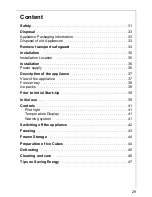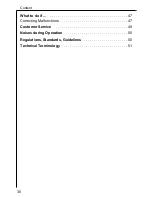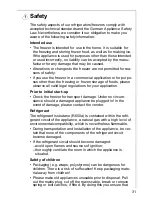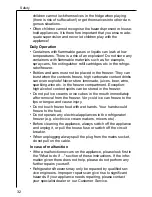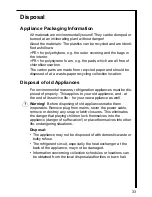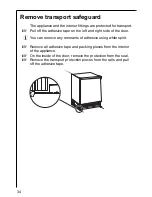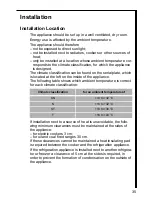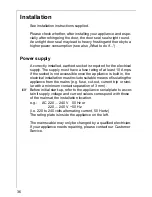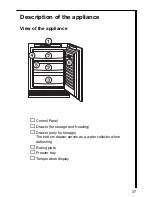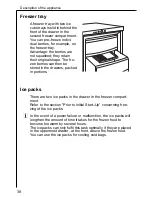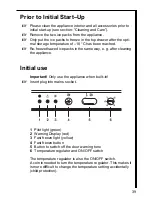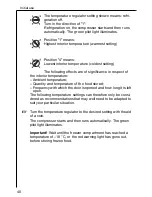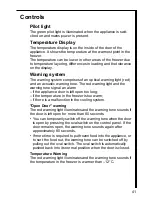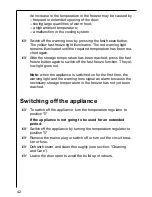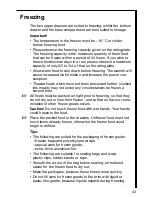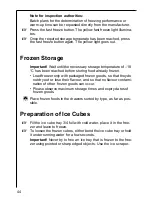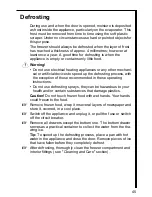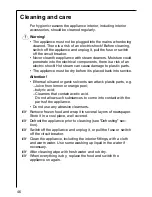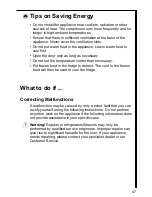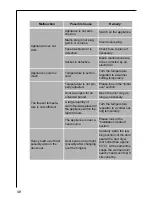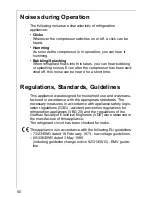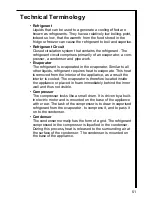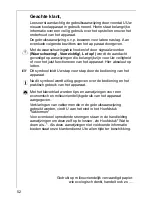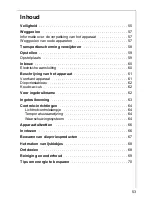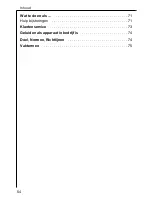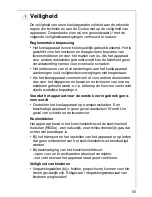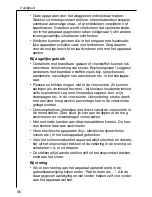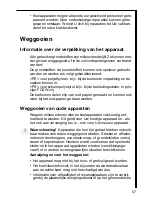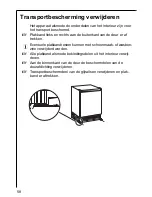
43
Freezing
The two upper drawers are suited to freezing, whilst the bottom
drawer and the base compartment are best suited to storage.
Important!
• The temperature in the freezer must be –18 °C or colder
before freezing food.
• Please observe the freezing capacity given on the rating plate.
The freezing capacity is the maximum quantity of fresh food
that can be frozen within a period of 24 hours. If you wish to
freeze food several days in a row, please observe a maximum
capacity of only 2/3 to 3/4 of that on the rating plate.
• Allow warm food to cool down before freezing. The warmth will
cause increased ice formation and increase the power con-
sumption.
• Thawed foods which have not been processed further (cooked
into meals) may not under any circumstances be frozen a
second time.
0
All foods must be packed air tight prior to freezing, so that they
do not dry out or lose their flavour, and so that no flavour conta-
mination of other frozen goods occurs.
Caution! Do not touch frozen food with wet hands. Your hands
could freeze to the food.
0
Place the packed food in the drawers. Unfrozen food must not
touch items already frozen, otherwise the frozen food could
begin to defrost.
Tips:
• The following are suited for the packaging of frozen goods:
– freezer bags and polyethylene wraps;
– special cans for frozen goods;
– extra–thick aluminium foil.
• The following are suitable for sealing bags and wrap:
plastic clips, rubber bands or tape.
• Smooth the air out of the bag before sealing; air makes it
easier for the frozen food to dry out.
• Make flat packages, because these freeze more quickly.
• Do not fill cans for frozen goods to the brim with liquid or
paste–like goods, because liquids expand during freezing.

